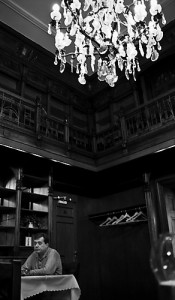Mike Johnston at The Online Photographer (TOP) has written a thoughtful post on the subject: what makes photographs valuable for the future. As usual, the post has caused a lot of comments. The following is my own contribution, as posted on TOP. Please go here to read Mike’s original post and all the other comments.
What this interesting post and the comments illustrate nicely, is that “value” is not something absolute or intrinsic to an object, but something that is attributed to the object in a certain context. And as the context change, the value may change likewise.
In a market economy, value is often equated with price. However, objects can have value in many other ways. Value is often a function of the story or meaning the object conveys to somebody – be that an individual or a certain group of people.
This is where public museums come into play. Their objective is to find, preserve, exhibit and communicate such objects, which convey stories or meaning of importance to society.
This, I can say from my own personal experience, is not an easy task.
At the Dept. of Modern History, Danish National Museum, where I work, we do collect photographs. However, we seldom accept or reject photos based on their artistic value – and never on the basis of their commercial value.
One of the main aims of the department is to documents changes in people’s daily life throughout the last 350 years. Thus, we have in our collection both the archives of commercial photographers, family albums and personal collections as well as a vast number of “diverse” photos, including such that has been taken by museum staff for documenting purpose.
What is important for us is to gather as much information as possible for each photo. As we ultimately collect objects in order to be able to tell stories of the past, we need as much information about the objects as possible. A photo with no information about who took it, why and when can be useless to us, even if it’s a beautiful example of photographic craftsmanship.
That is also why, that in an ideal world we would collect most of our objects not just from what the public more or less randomly comes to offer us, but as part of carefully planned research programs. This would ensure that we get as much relevant information as possible and that we expand our collections in areas, which are particularly relevant. Unfortunately, we have only very limited funding to do so.

Looking back at the historical evolvement of photography as a mass medium, from the point of view of a museum, there has and will be different challenges. From the early period of photography, the number of objects to be collected is scarcer and some of them involve at lot of work and expenses, when it comes to preservation and storing. During the mid-20th century there is a vast increase in the number of objects, since photography becomes accessible for everybody.
But still: as long as taking pictures – even family snapshots – involves a rather lengthy and not especially cheap process of buying the film, taking the picture, having it processed, sorting out the best ones and putting them in an album, there is a great chance that the family album more or less consciously reflects the self-image of its producers: these are the pictures, that the original photographer valued and cherished. This makes such an album a possible source of how people at a certain time and space interpreted their own lives.
With the advance of digital photography, however, the number of pictures has exploded. The process of photographing is now quick and almost free, so there is no reason not to photograph anything that catch your eyes – be it important or not. For the future museum curators, who inherit a collection of digital snapshots, the job of sorting out the meaning of the photos as the photographer’s interpretations of his or her own life becomes much more complicated. What is important here, what is not – and in what sense and context?
There are great challenges ahead, in the area of research methodology and theory.